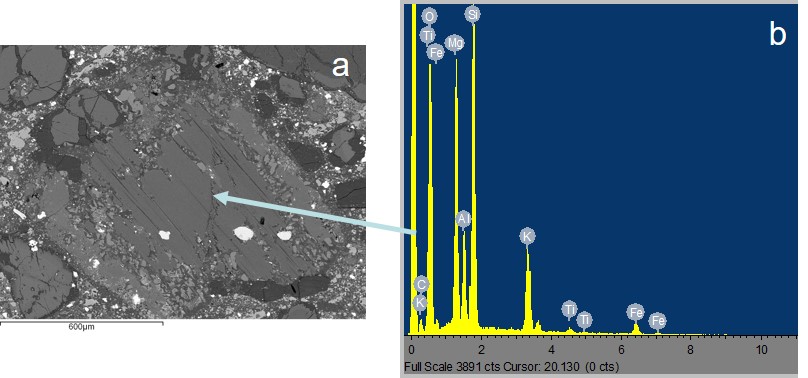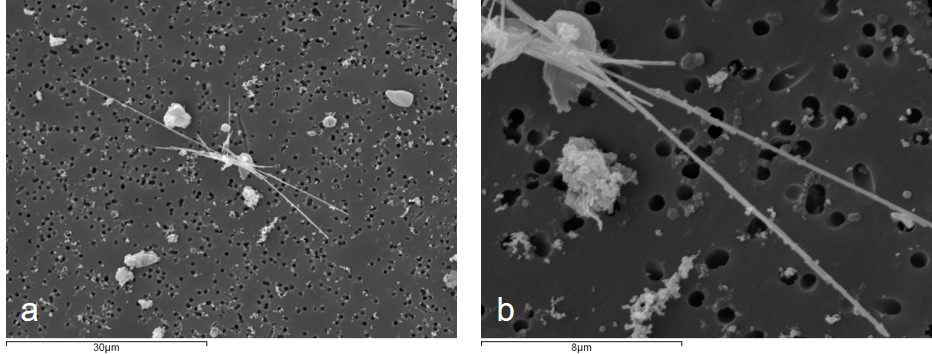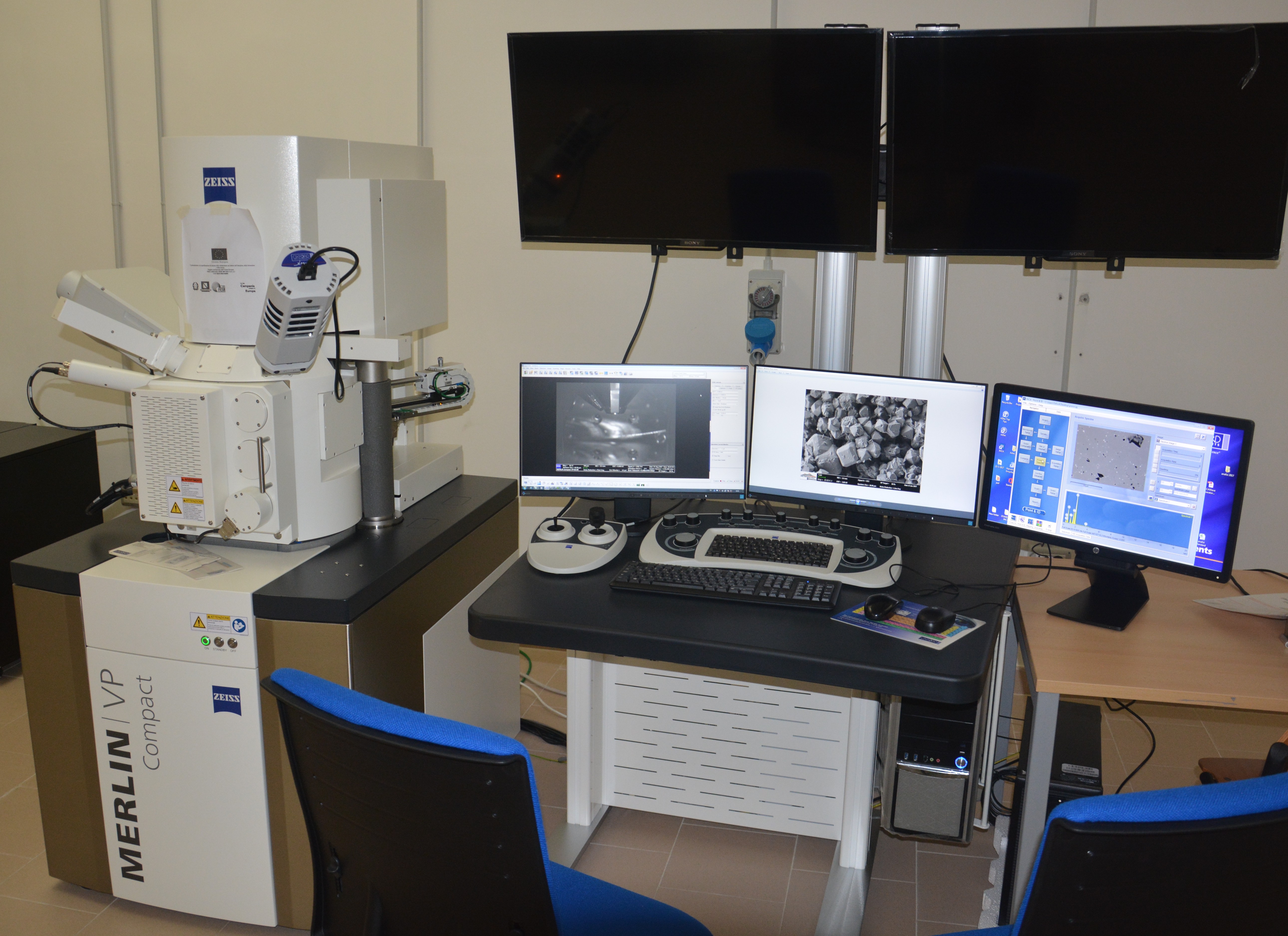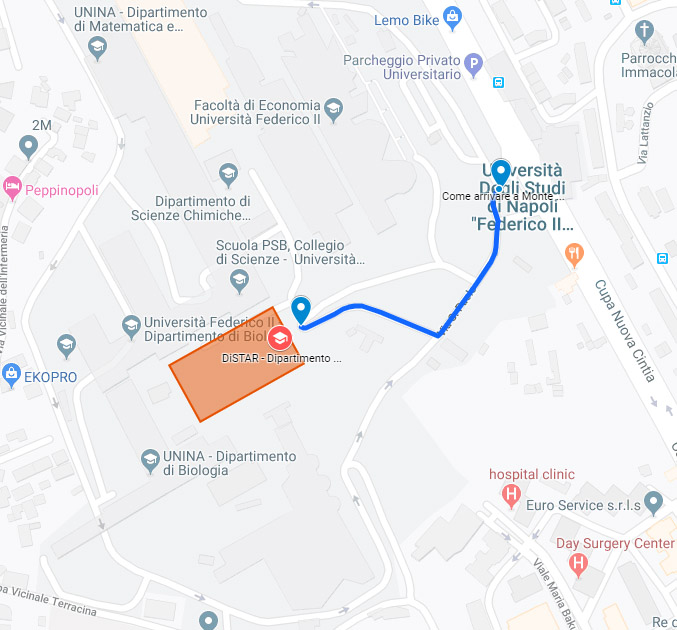Responsible: Prof. Paola Petrosino
Co-Responsible: Dr. Roberto De Gennaro
Laboratory of scanning electron microscopy (SEM) at DiSTAR is equipped by two scanning electron microscopes: a SEM Jeol JSM5310 and FESEM ZEISS Merlin VP. Both of them allow the acquisition of high resolution magnified images of both raw inorganic and suitably prepared organic samples. Images are routinely digitally acquired.
SEM Jeol JSM5310, available at the lab since 1998, supplies both 3D images through a secondary electron detector (SE ) and topographic and compositional images through a backscattered electron detector (BSE). Moreover, it is equipped with an EDS X-Stream Inca Oxford detector that supplies qualitative evaluation of chemical elements starting from fluorine. It is also possible, thanks to a well performing reference standardization, to obtain single point analyses of polished samples (resin embedded or thin sections).
Recently acquired (2017) FESEM ZEISS Merlin VP has the very large vacuum chamber Gemini 2 that hosts samples up to 15 cm diameter and its main feature is to work both in high vacuum and in variable pressure. In as much, this SEM reaches 1 million magnification. It is equipped with an "inlens" detector of both secondary and backscattered electrons, a normal secondary electron detector and a variable pressure secondary electron detector. Furthermore, it is linked to an EDS Oxford X-Max detector and to a WDS Wave Oxford spectometer equipped with 4 analytical crystals. The combined use of EDS and WDS analytical facilities allows the quantitative evaluation of the content of chemical elements starting from boron. Dedicated softwares allow the acquisition of compositional maps for the automated evaluation of the mineralogical composition in an unknown sample.
The best advantage in using FESEM is the possibility to obtain morphoscopic and chemical data from the surface of an "as is" sample, allowing non destructive and non invasive analyses that make this apparatus the most powerful tool for SEM investigation in cultural heritage and forensic geology fields.
For SEM sample preparation, the laboratory is equipped with a gold sputter (Agar Auto Sputter Coater) and a carbon coater (Agar Auto Carbon Coater).
The SEM lab is used for didactics, scientific research and analyses on behave of third parties. Main users are from University Federico II, other universities, CNR and other research institutions dealing with Earth Science, Physics, Chemistry, Agriculture and Cultural Heritage.
Our laboratory is accredited under INAIL - Istituto Superiore di Sanità for SEM analysis of asbestos, both on total samples and on airborne fibers.
Figure 1. Field Emission Scannin Electron Microscope (SEM) Merlin VP.
Figure 2: Backscattered image of a mica crystal from a thin section of a rock (a) with the EDS spectrum (b).
Figure 3: SE image of an airborne asbesto (crocidolite) on a policarbonate filter at 2000x magnification, as the DM 6.9.1994 requires(a), and at 7500x magnification (b).
 Figura 2. Immagine in backscattering di una sezione sottile di roccia contenente un cristallo di mica (a) con in relativo spettro EDS (b).
Figura 2. Immagine in backscattering di una sezione sottile di roccia contenente un cristallo di mica (a) con in relativo spettro EDS (b).
 Figura 3. Osservazione in SE di fibre di tipo asbestiforme (crocidolite) su filtri in policarbonato a 2000x, scala dell’analisi prevista dal Decreto Ministeriale 6.9.1994 e smi (a), e a 7500x (b).
Figura 3. Osservazione in SE di fibre di tipo asbestiforme (crocidolite) su filtri in policarbonato a 2000x, scala dell’analisi prevista dal Decreto Ministeriale 6.9.1994 e smi (a), e a 7500x (b).
 Figura 1. Microscopio elettronico a scansione (SEM) di tipo field emission Merlin VP.
Figura 1. Microscopio elettronico a scansione (SEM) di tipo field emission Merlin VP.
 English
English  Italiano
Italiano 








